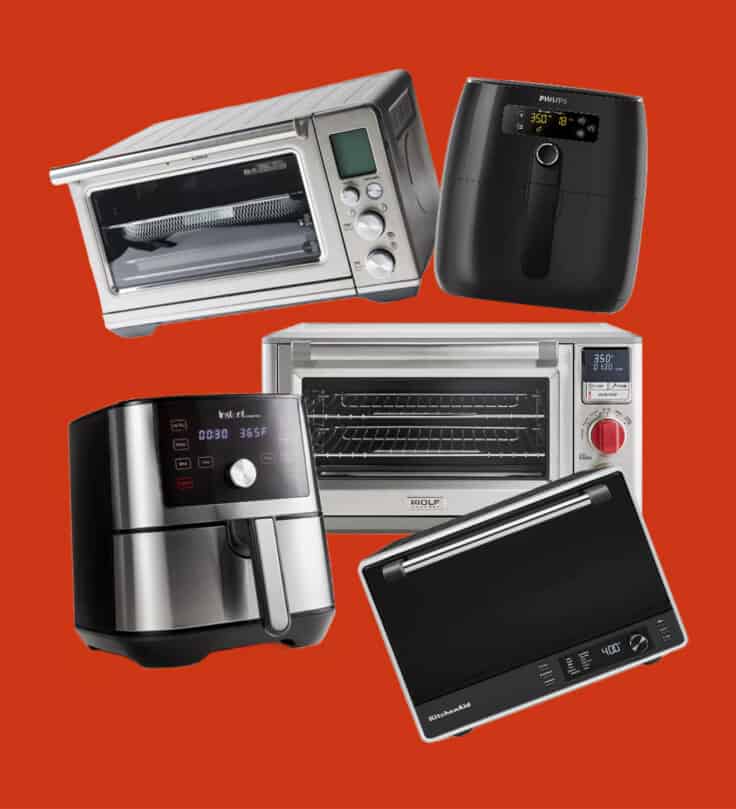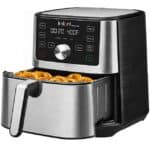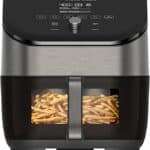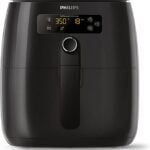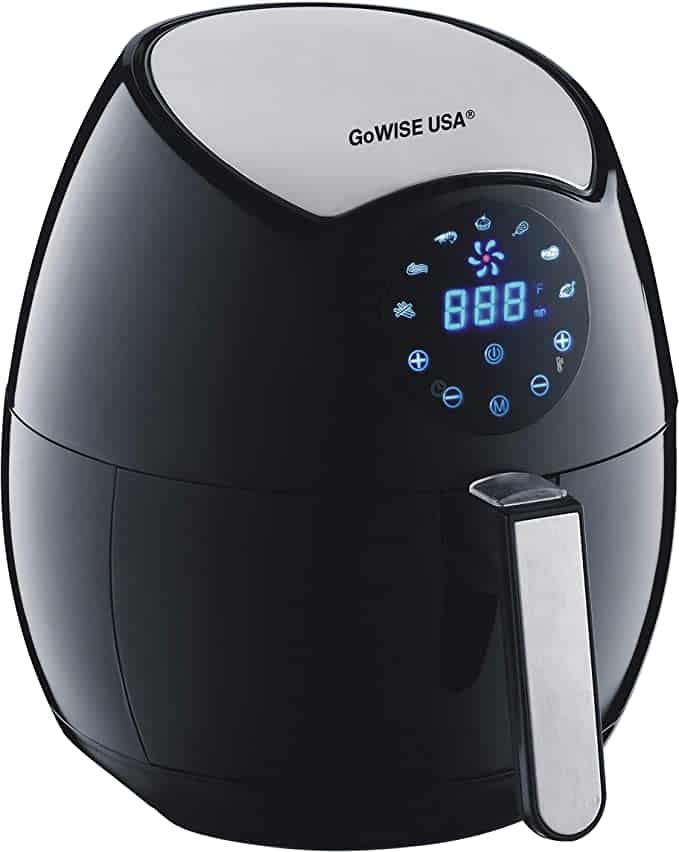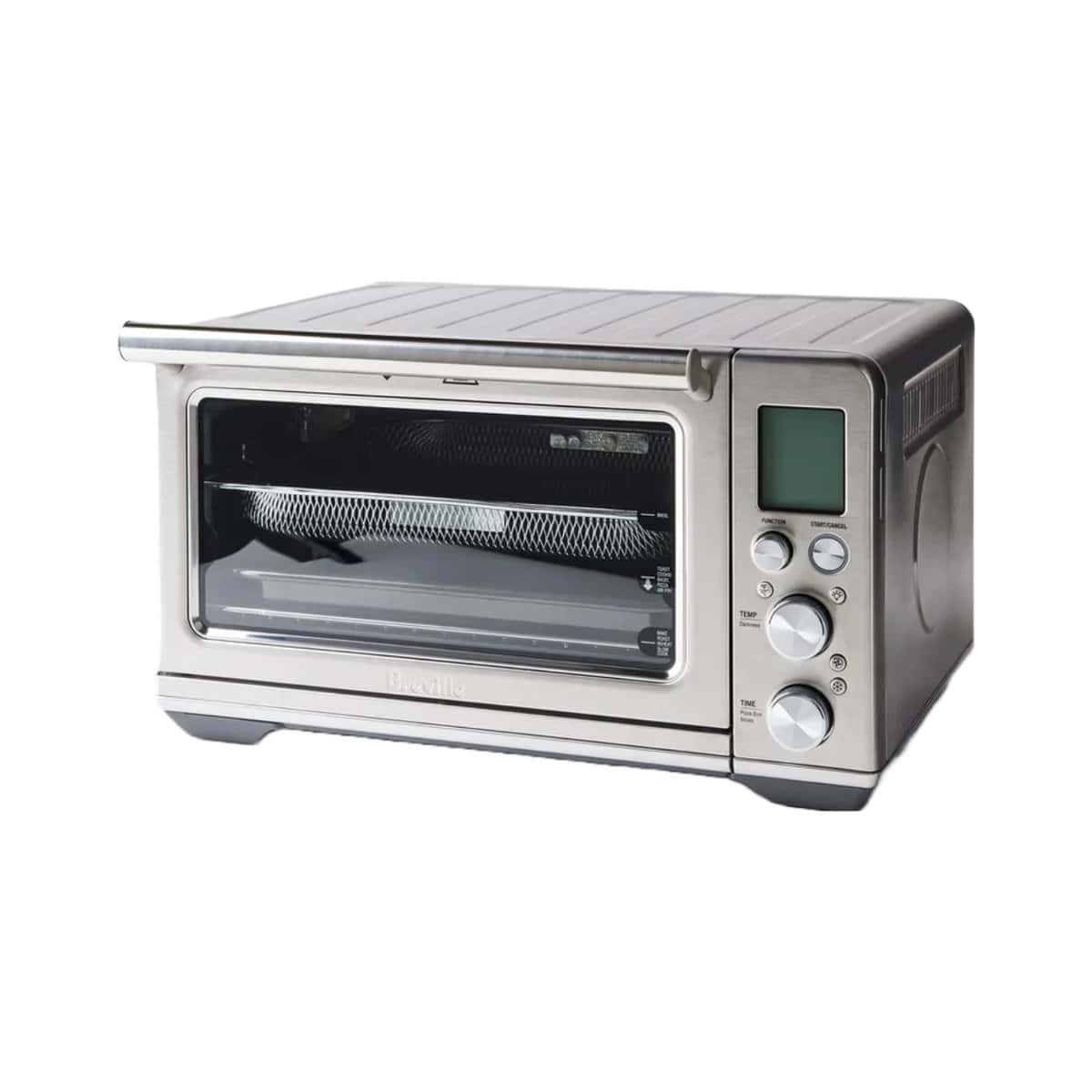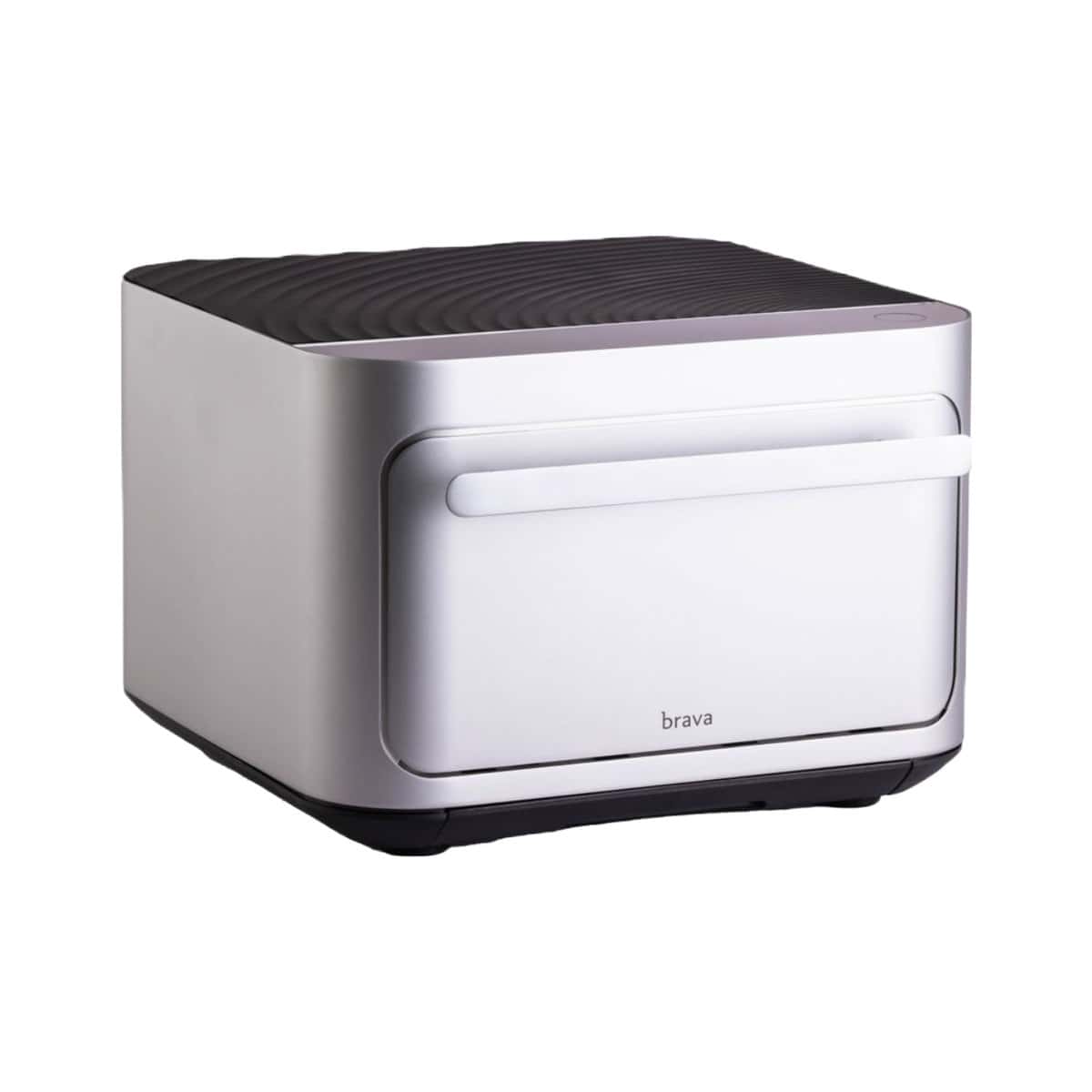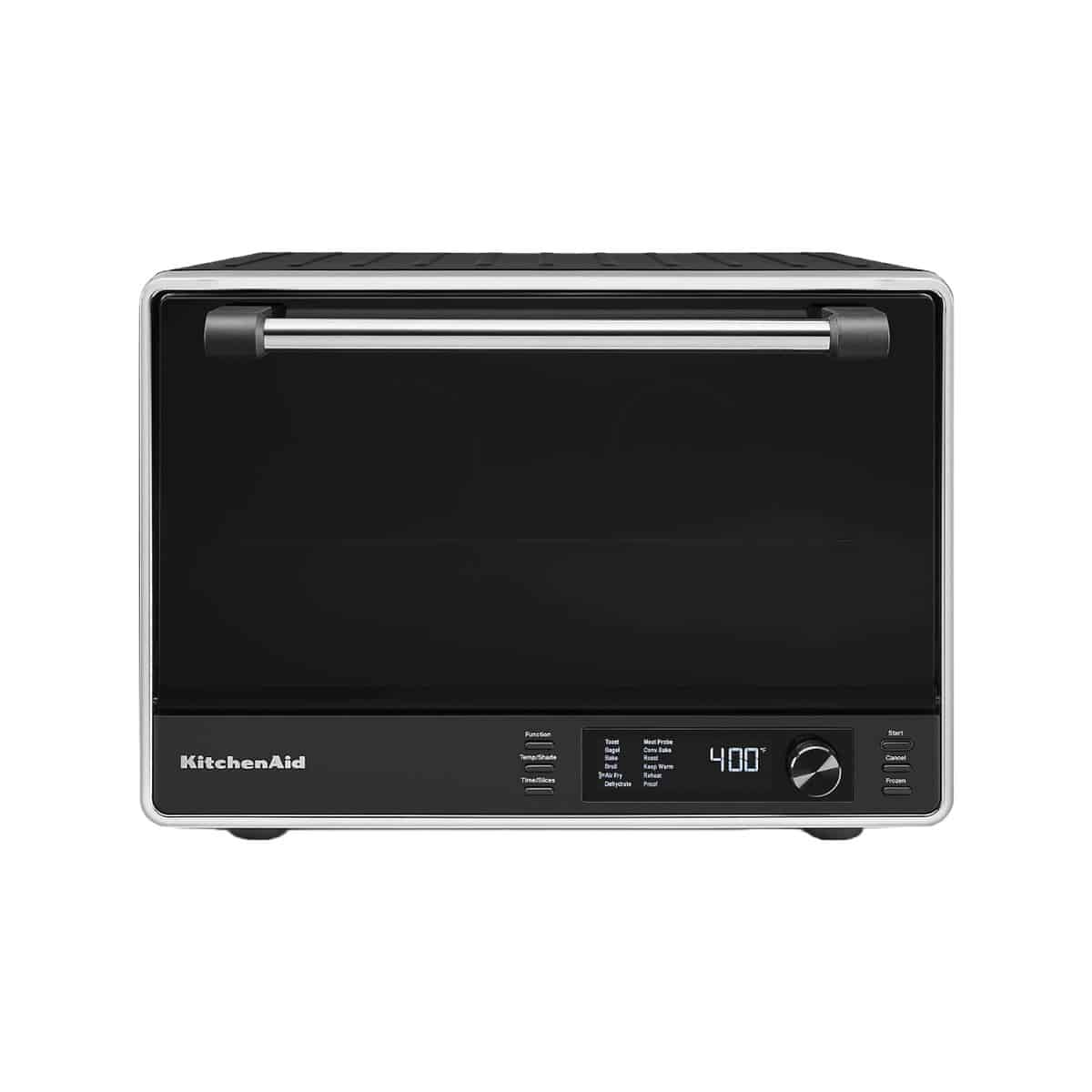You’ve probably heard of air fryers and may already have one in your kitchen. And you may be surprised to learn air fryers are very similar to convection ovens, with some key differences. We’ll dive into the differences of air fryers vs convection ovens—when to use them, what they’re best for, and our favorite brands and models.
According to the market research firm NPD Group, 25 million air fryers were sold between 2020 and 2021. Since being introduced by Philips in 2010, air fryers have become a common household cooking tool.
Table of Contents
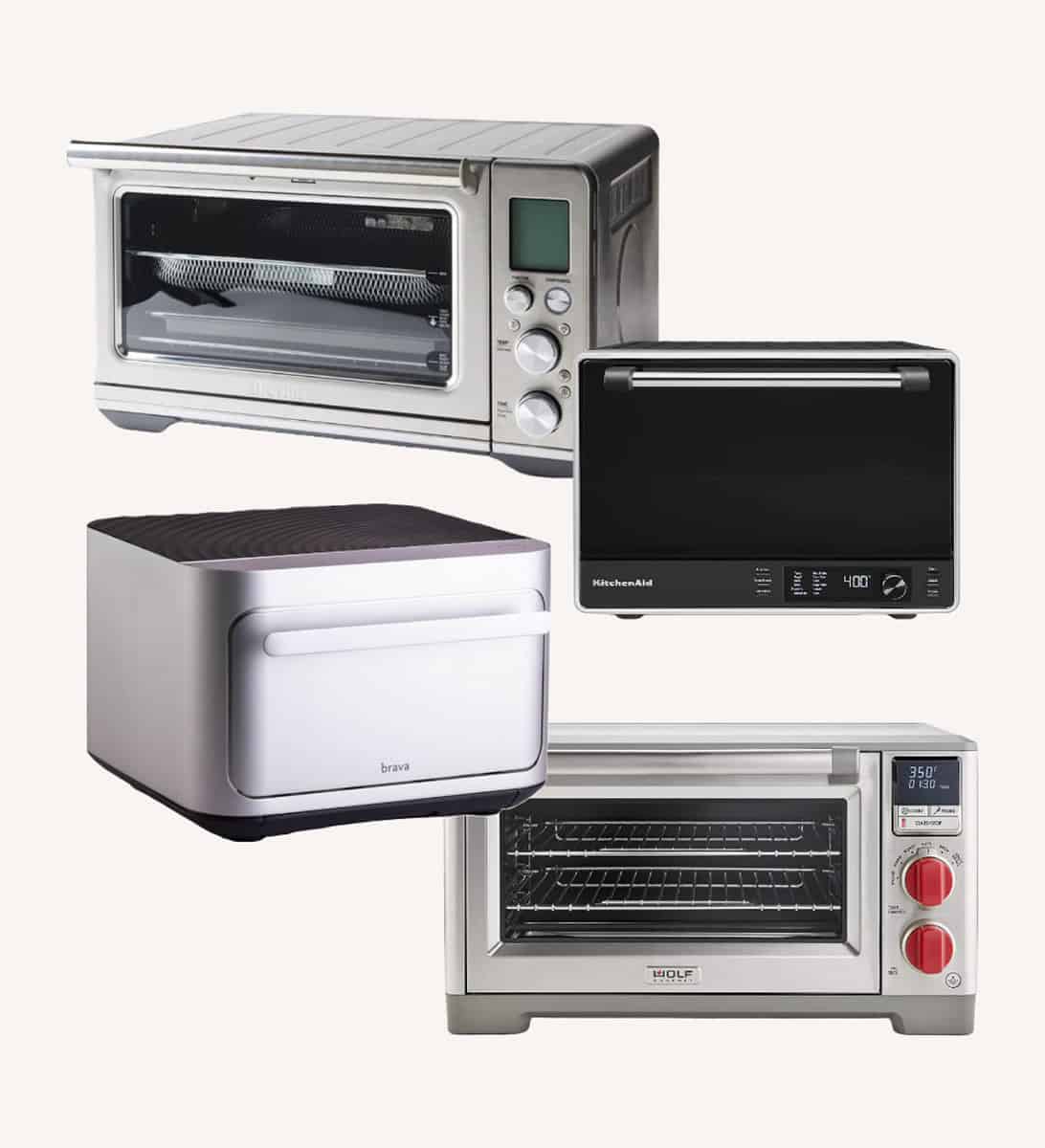
What is a Convection Oven?
The distinguishing feature of a convection oven is the presence of a fan that circulates the oven’s hot air. Circulating air increases the cooking speed and provides more even browning than conventional ovens. It also means the cooking temperature inside the oven is hotter.
Usually, the recommended cooking temperature in a convection oven is about 25°F cooler than a conventional oven. Overall, the convection oven was designed to provide superior baking in less time.
Convection ovens were first introduced in the mid-1960s. They were initially considered a tool for commercial kitchens and professional bakers due to their higher cost.
Technology advancements mean convection ovens are now more common and available to the general public. Many modern traditional ovens can even act as a conventional or convection oven by simply choosing the convection setting on the oven. Countertop convection models are also very easy to find at an affordable price.
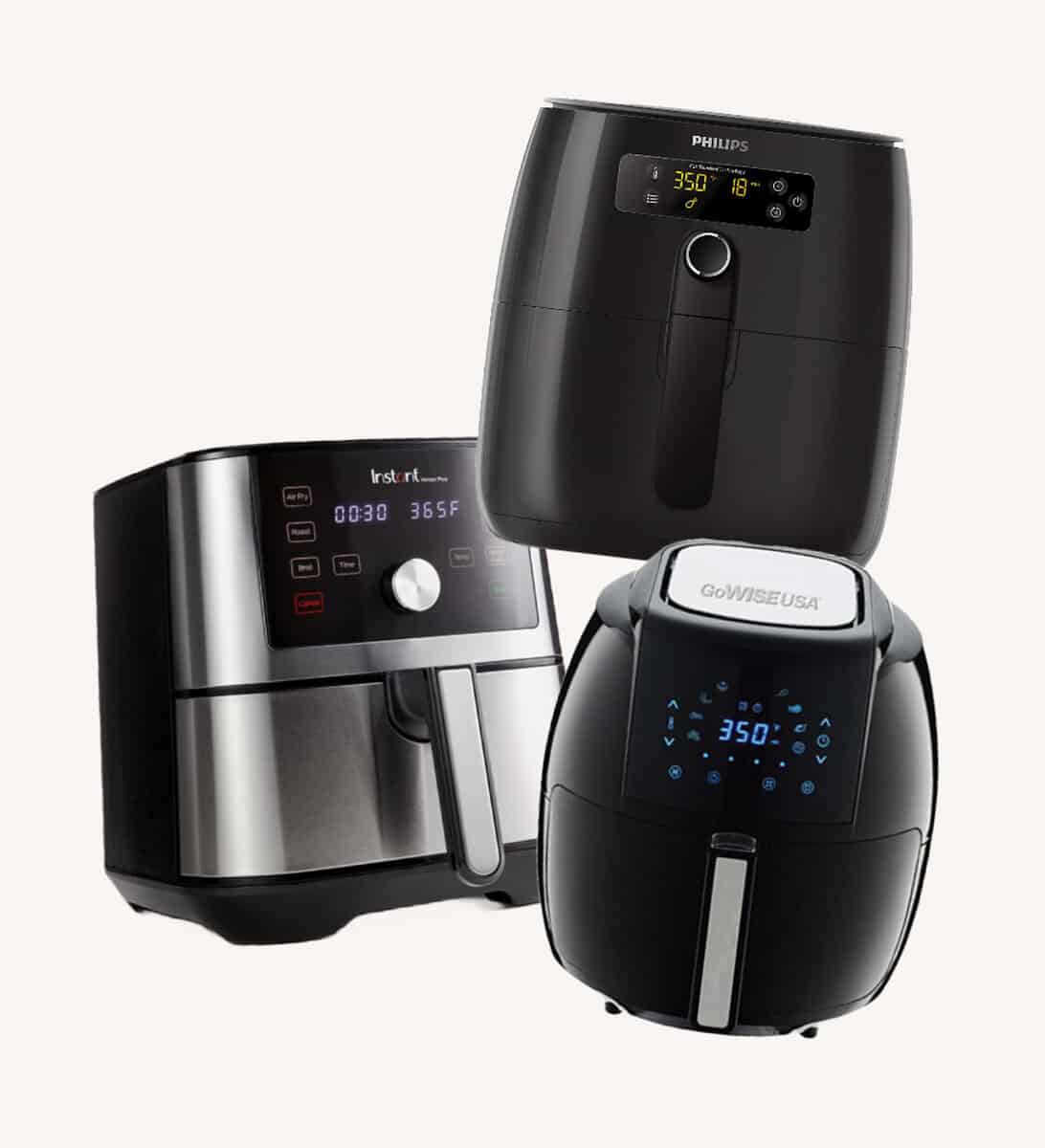
How Does an Air Fryer Work?
An air fryer is an electric countertop appliance with a heating element and air fan positioned above a food basket.
Food is placed in the basket, the basket is set into the unit, and you set the controls for the time and temperature of cooking. It was designed to be an alternative to deep-frying and produce crispy food without added fat.
The air fryer works by rapidly circulating hot air around the food at a high intensity. Philips named it rapid air technology. The fan at the top of the unit transfers the heat downward, around, and upward through the food to cook from all sides. It is essentially a small convection oven, with more precise results in smaller quantities.
An air fryer can cook faster and with more intensity, creating a delightfully crispy texture on your food in a matter of minutes. According to APDS, the product innovation company that developed the rapid air technology for Philips, cooking times are reduced by 25-50% compared to oven methods.
The air fryer now has a dedicated following with a range of accessories, cookbooks, and dozens of brands that make air fryer models.
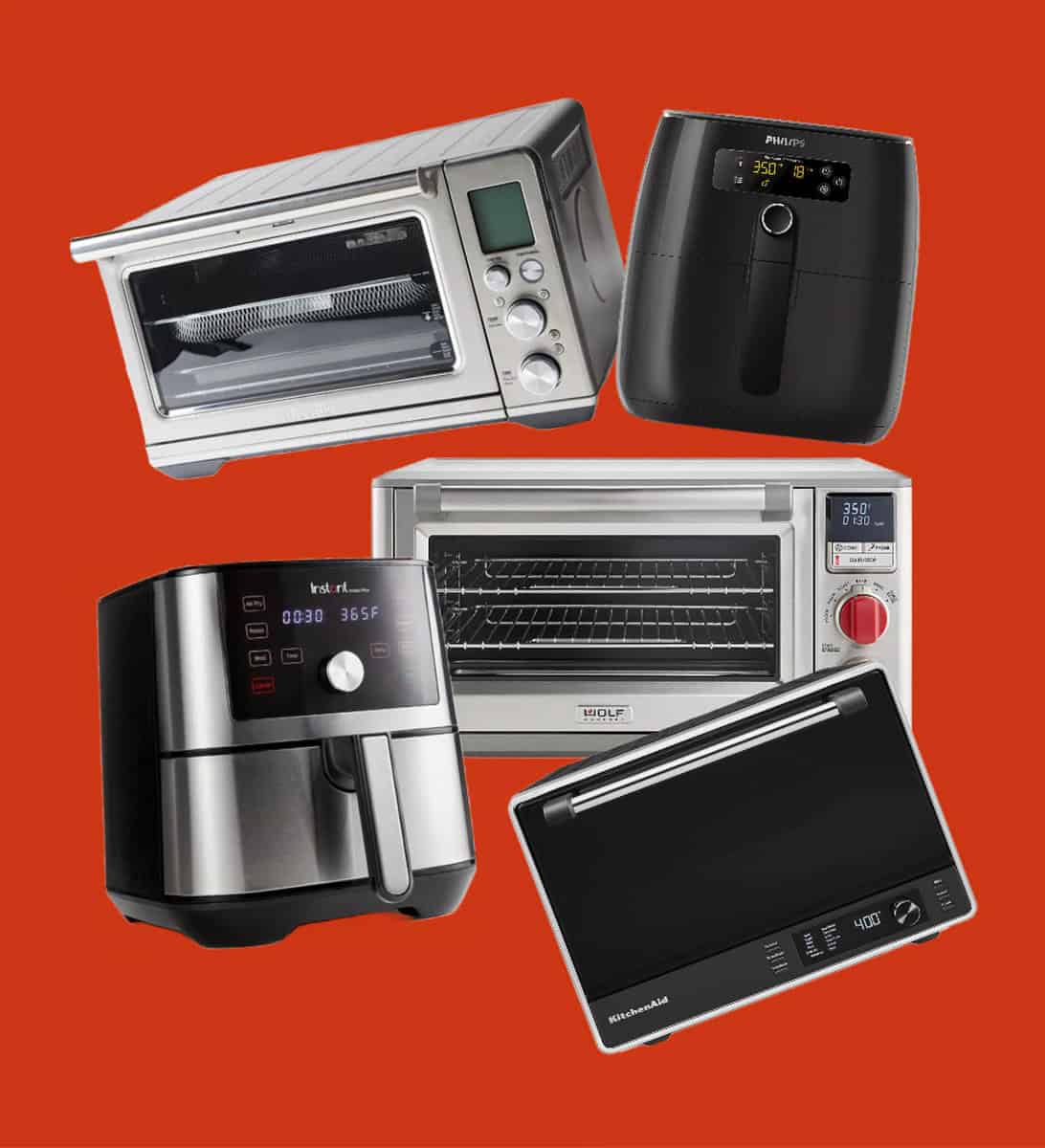
Air Fryer vs Convection Oven: What Are the Main Differences?
The biggest difference between an air fryer and a convection oven is the size and speed of the air fryer. The cooking principles are the same, but the air fryer does the job quickly and more intensely, with crispier results. It is fantastic for reheating or cooking crispy foods.
Food also does not need to be placed in a single layer in the air fryer to cook evenly. This means you can take full advantage of the capacity of the food basket. The air circulation technology allows food that is stacked to cook appropriately, although shaking and redistribution of the food may still be recommended in some cases for best results.
The small size of the air fryer contributes to its speed, but also several of its limitations in application.
A convection oven can be used for nearly any cooking or baking task from roasting meat to baking cookies. It is usually designed to cook large portions of food such as a whole pizza, large casserole dish, or roasting pan. We like the versatility of being able to use different rack positions and full-sized sheet pan in an oven to cook food.
The air fryer generally doesn’t have as much versatility or cooking capacity. Portions may be limited, or batch cooking may be necessary if you’re cooking for a large group or using a recipe that requires food not be layered.
Both are excellent and handy appliances to have in your kitchen! We recommend considering your cooking habits and lifestyle when deciding which one to use or purchase.
FAQ
Here are the few best uses of the air fryer we suggest trying in the air fryer:
– Heating any frozen or homemade versions of crispy foods such as French fries, mozzarella sticks, breaded chicken, pizza rolls, etc.
Any vegetables such as carrots, brussel sprouts, green beans, and more.
– Reheat leftovers such as pizza slices.
– Crispy tofu
– Small portions of proteins such as chicken breasts or steak can be made in the air fryer
– Homemade or frozen fish sticks.
– Chicken wings
We suggest the following foods the best cook in a convection oven:
– Roast meats such as a whole chicken, turkey or beef roast.
– Roasting vegetables
– Fresh or Frozen Pizza
– Cookies and pastries
– Casseroles
Our test kitchen prefers a 6-quart air-fryer. It’s not too big that it takes up tons of counter space while being big enough to handle a variety of recipe types and cooking options.
If you don’t have an air fryer but want to imitate the cooking technique, good news, you can! To create an oven air fryer, heat your oven to the specified temperature in the recipe with the convection setting turned on. Set a wire rack inside a baking sheet and arrange your food over the rack. This will get you close to air-fryer results.
Give the basket a quick spritz with nonstick spray before placing the food in the basket. We also recommend spritzing the food with some nonstick cooking spray which will encourage crisping and color!
Test Kitchen Approved Air-Fryers
If you’re looking for a two-for-one deal, check out the Breville Smart Oven Air-Fryer. It’s ideal if you’re in the market for a larger air fryer that can also work as a toaster oven, dehydrator, counter top convection oven and more, this is just what you need!
Convection Oven vs Toaster Oven
We think convection ovens are the best of both worlds—sure you can toast some bread and reheat pizza in a convection oven, but you can also do so much more. A convection oven is equipped with a fan that circulates hot air throughout the oven and around the food. This cooks the food quicker and more evenly than even a conventional oven.
A toaster oven, on the other hand, is more similar to a conventional oven since it heats from the top and bottom. If you just need something that toasts and reheats, then a toaster oven is perfect for you.
But, if you’re looking for something that has more capabilities including roasting, airfrying, proving, broiling, convection baking, and even slow-cooking, then a countertop convection oven may be in your future. If you have the counter space to spare, that is.
Test Kitchen Approved Countertop Convection Ovens
Air Fryer Recipes We Love
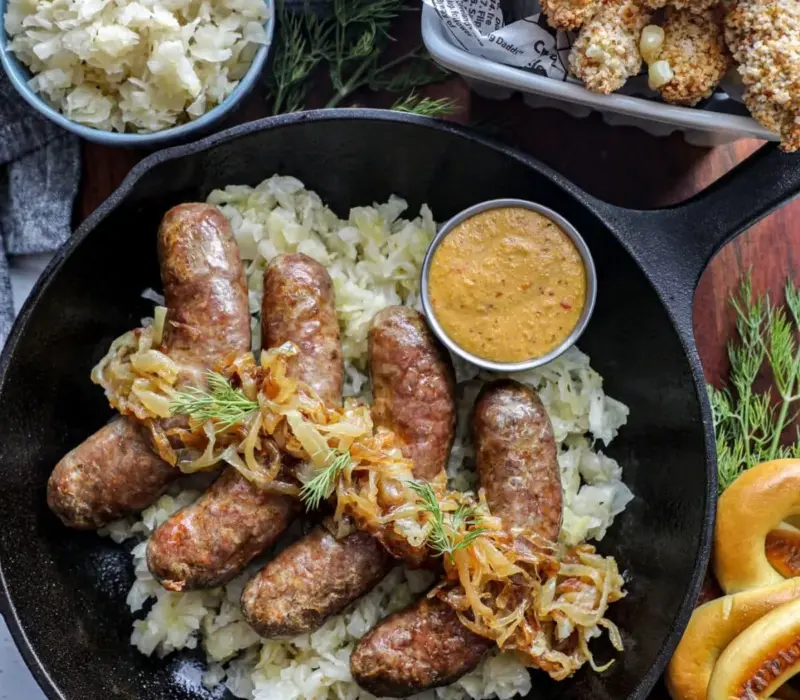
1
Air Fryer Brats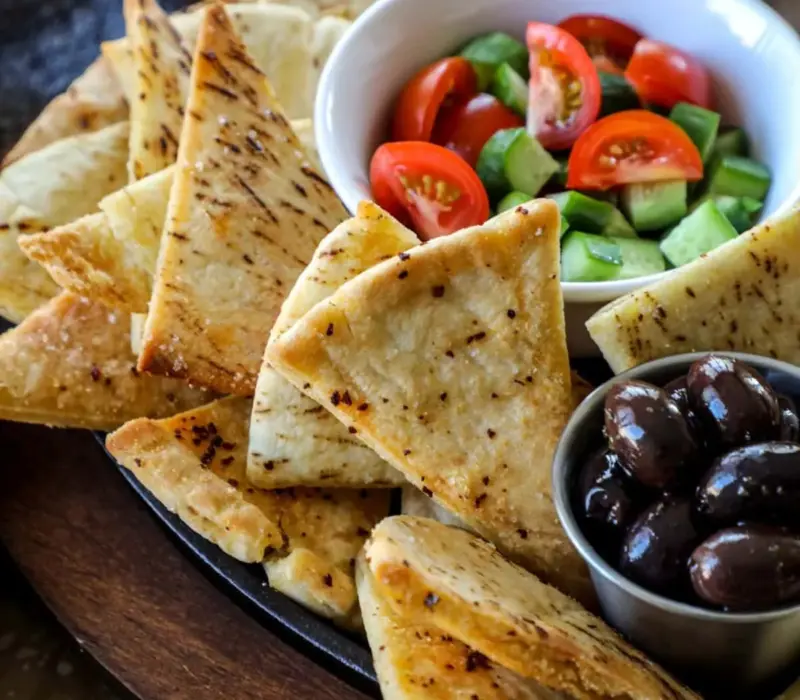
2
Air Fryer Pita Chips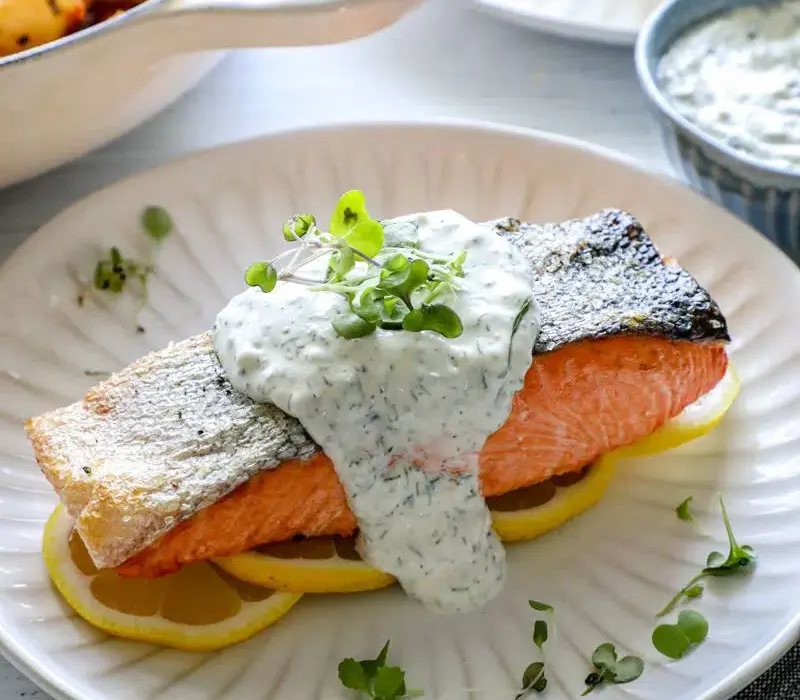
3
Air Fried Salmon